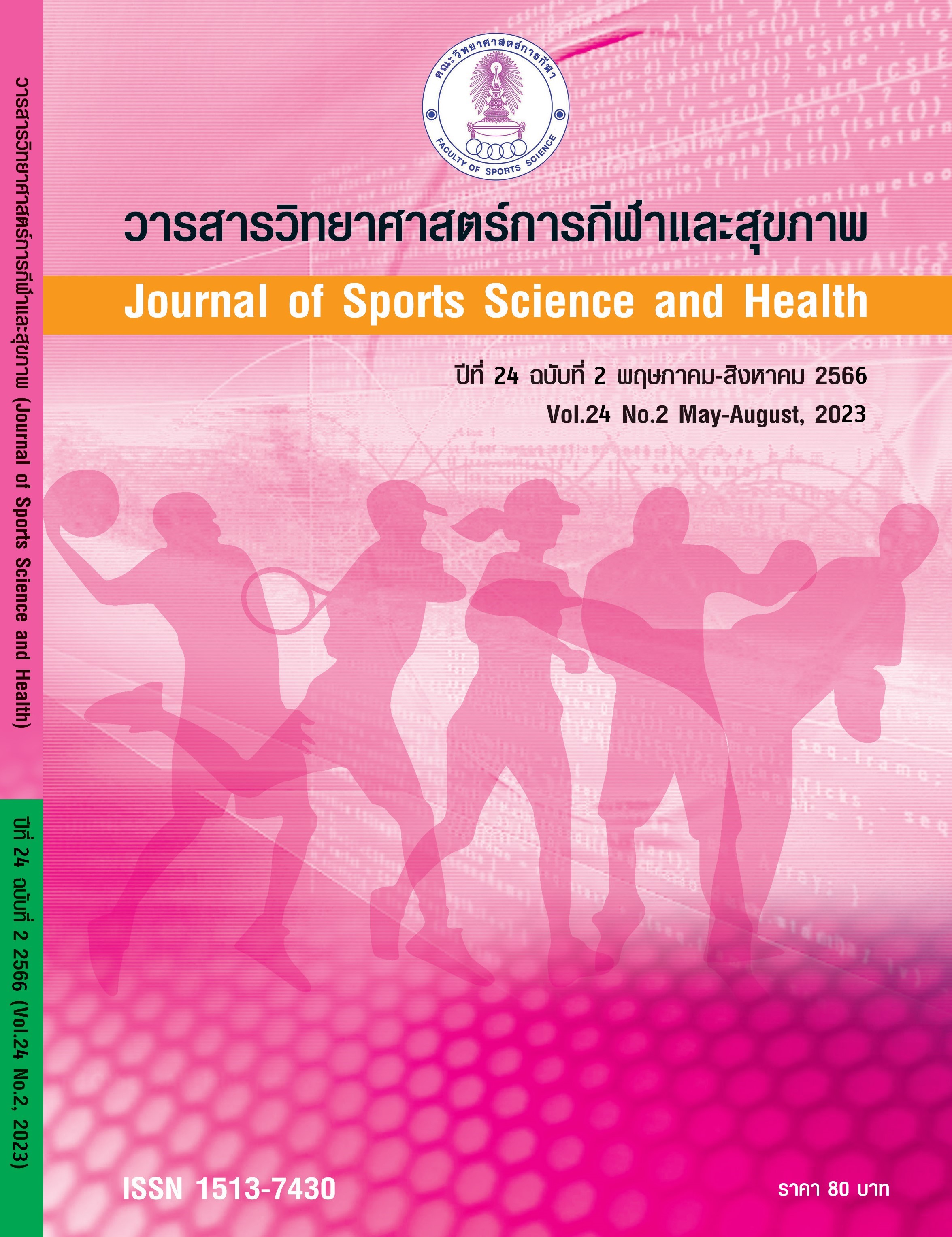EFFECTS OF LASER LIGHT VISUAL CUEING ON FREEZING OF GAIT AND FIRST STEP LENGTH IN PATIENTS WITH PARKINSON’S DISEASE
Main Article Content
Abstract
Currently, there are more patients with Parkinson's disease. Freezing of gait (FOG) problems and decreased first step length during gait initiation were found to be prone to falls, the poor activity in daily life, self-help is more difficulty, bedridden and disability in the future. Therefore, external cues as an alternative to training for stimulating and target the patient while walking. This study examined the effects of laser light visual cueing on freezing of gait and first step length in patients with Parkinson's disease.
Purpose: The purpose of this study was to effects of laser light on freezing of gait and first step length in patients with Parkinson's disease.
Methods: Eleven patients with Parkinson's disease (aged 40-85 years) both men and women who had a modified Hoehn and Yahr scale of 2 to 3. The samples were drawn for testing divided into 2 conditions; no cue and laser light. The samples were tested with laser light on the anterior body around five lumbar vertebrae (L5) to collect the percent of time spent freezing and the length of first step length (Left and right first step length). Data were analyzed using mean, standard deviation and Paired-Sample T Test. The level of statistical significance was 0.05.
Results: The results showed that no cue significantly increased the percent time spent freezing compared to laser light (p<0.05). The first step length significantly increased when compared between laser light to no cue (p<0.05).
Conclusion: Laser light visual cueing diminished freezing of gait (FOG) but enhanced longer first step length in patients with Parkinson's disease.
Article Details

This work is licensed under a Creative Commons Attribution-NonCommercial-NoDerivatives 4.0 International License.
References
Cao, S. S., Yuan, X. Z., Wang, S. H., Taximaimaiti, R., & Wang, X. P. (2020). Transverse Strips Instead of Wearable Laser Lights Alleviate the Sequence Effect Toward a Destination in Parkinson's Disease Patients with Freezing of Gait. Frontiers in neurology, 11, 838. https://doi.org/10.3389/fneur.2020.00838
Egerton, C. J., McCandless, P., Evans, B., Janssen, J., & Richards, J. D. (2015). Laserlight visual cueing device for freezing of gait in Parkinson's disease: a case study of the biomechanics involved. Physiotherapy Theory and Practice, 31(7), 518-526. https://doi.org/10.3109/09593985.2015.1037874
McCandless, P. J., Evans, B. J., Janssen, J., Selfe, J., Churchill, A., & Richards, J. (2016). Effect of three cueing devices for people with Parkinson's disease with gait initiation difficulties. Gait & posture, 44, 7-11. https://doi.org/10.1016/j.gaitpost.2015.11.006
Muthukrishnan, N., Abbas, J. J., Shill, H. A., & Krishnamurthi, N. (2019). Cueing Paradigms to Improve Gait and Posture in Parkinson’s Disease: A Narrative Review. Sensors, 19(24), 5468. https://doi.org/10.3390/s19245468
Nutt, J. G., Bloem, B. R., Giladi, N., Hallett, M., Horak, F. B., & Nieuwboer, A. (2011). Freezing of gait: moving forward on a mysterious clinical phenomenon. The Lancet Neurology, 10(8), 734-744. https://doi.org/10.1016/s1474-4422(11)70143-0
Spaulding, S. J., Barber, B., Colby, M., Cormack, B., Mick, T., & Jenkins, M. E. (2013). Cueing and Gait Improvement Among People With Parkinson's Disease: A Meta-Analysis. Archives of Physical Medicine and Rehabilitation, 94(3), 562-570. https://doi.org/https://doi.org/10.1016/j.apmr.2012.10.026
Tang, L., Xu, W., Li, Z., Chen, Y., Chen, H., Yu, R., Gu, D. (2019). Quantitative gait analysis for laser cue in Parkinson's disease patients with freezing of gait. Annals of translational medicine, 7(14), 324-324. https://doi.org/10.21037/atm.2019.05.87


